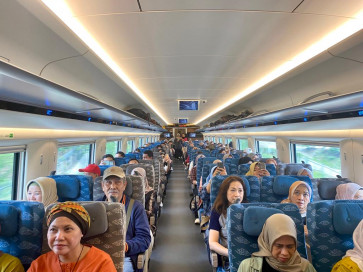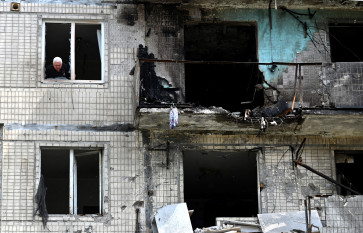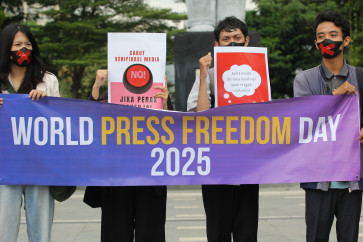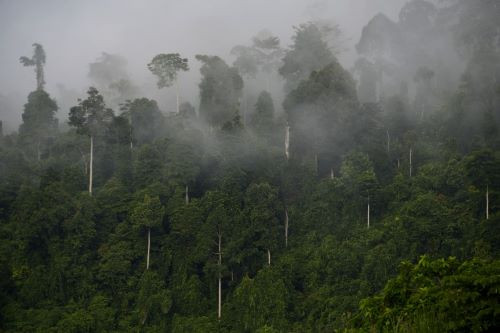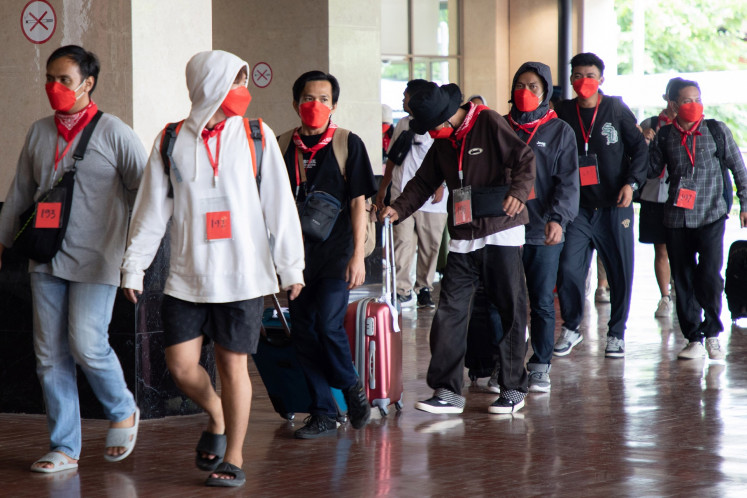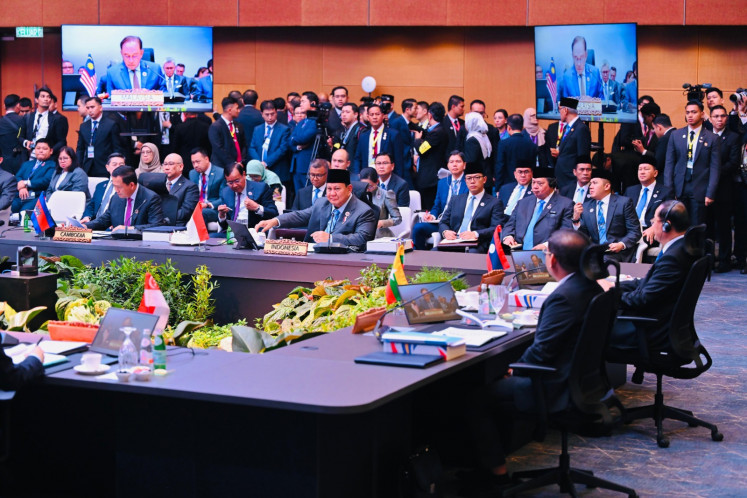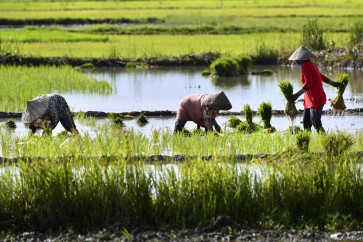Urgent need to safeguard Indonesia’s agricultural future
Without intervention, ongoing land use changes are placing significant pressure on Indonesia’s food supply.
Change text size
Gift Premium Articles
to Anyone
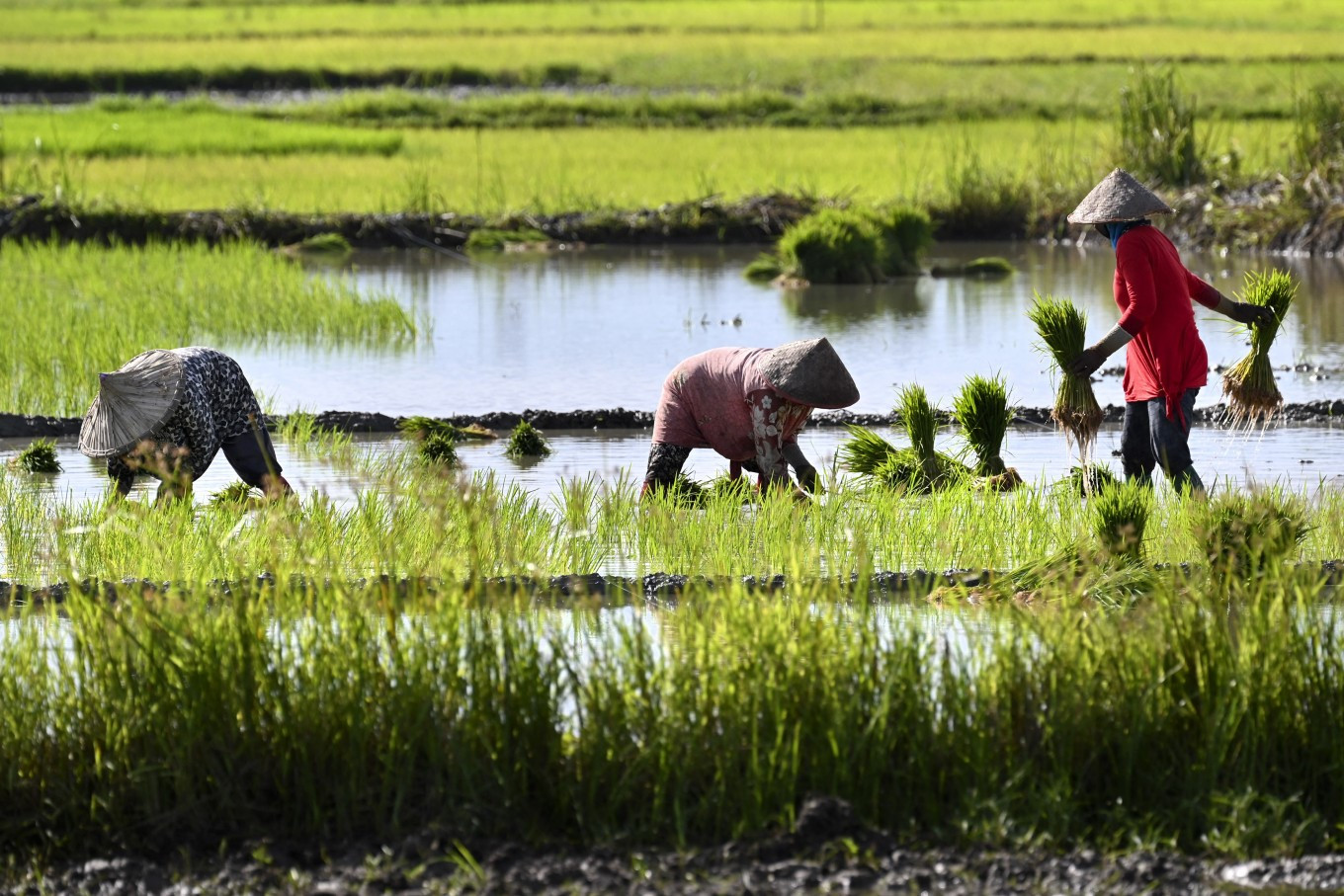 Farmers plant rice in a paddy field on June 28, 2024, at Lambaro in Aceh. (AFP/Chaideer Mahyuddin)
Farmers plant rice in a paddy field on June 28, 2024, at Lambaro in Aceh. (AFP/Chaideer Mahyuddin)
I
n Indonesia, the agricultural sector is crucial to the economy. The sector supports employment absorption and serves as a crucial safety net for the poor.
According to Statistics Indonesia (BPS), between 2014 and 2023, the agricultural sector consistently contributed an average of 13.1 percent to gross domestic product. This substantial contribution correlates with high employment absorption, accounting for 28.2 percent of the labor force in 2023.
Notably, the agricultural sector remains the primary employment source for impoverished families. This is proven by data from the World Bank that shows 64 percent of the poor were employed in the agricultural sector in 2020.
President Prabowo Subianto has expressed his support for expanding oil palm plantations. Many experts have raised concerns that this could accelerate deforestation. However, the expansion of oil palm plantations will not only threaten deforestation but also the food supply through oil palm plantation expansion over the years, as most of the converted land between 2011 to 2022 as previously agricultural land.
Moreover, a recent study published by Koalisi Sistem Pangan Lestari (KSPL) shows that 3.5 million hectares of plantation land in Sumatra (27.5 percent of total plantation land on the island) and 1.5 million ha in Kalimantan (20.8 percent of the island’s total plantation land) was converted from agricultural land.
The same study shows that a similar trend also occurs in Sulawesi, where plantation areas have expanded primarily at the expense of agricultural land. With continued government support for oil palm plantation expansion, this trend is likely to accelerate, further reducing agricultural land and posing a serious threat to Indonesia’s future food security.
On other major islands, competition for land takes a different form because of urbanization, economic development and tourism activities. On Java Island between 2011 and 2022, almost 91 percent of the land converted to residential or industrial areas come from rice field conversion. This shift reflects increasing demand for housing and infrastructure caused by urbanization. Similarly, in Bali, rice fields are largely being replaced by residential areas, resorts and hotels to accommodate expansion of the tourism sector.


